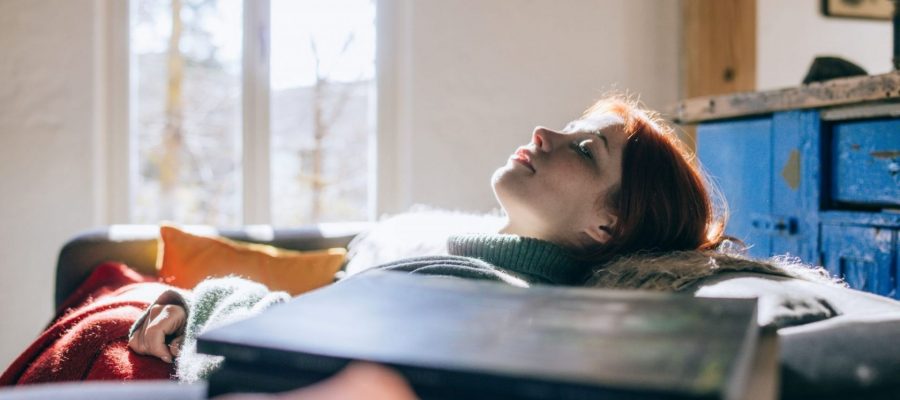If you’re feeling sluggish after lunch, you might tempted to head back to bed for a power-nap. But could a spot of exercise boost your energy quicker?
To nap or not to nap? That is the question I ask myself pretty much every day when my brain and body feel sluggish in the middle of the afternoon.
It’s natural for our circadian rhythm (the 24-hour process that regulates your sleep-wake cycle) to dip after lunch, and that’s what leads to low energy. But there are also other reasons why you might feel the need to lie down and close your eyes, like broken sleep or eating dinner late at night.
In a bid to combat this tiredness, it can become second nature to make yet another cup of coffee or reach for a sugary snack. But those solutions, at best, act as sticking plasters. At worst, they can exacerbate fatigue by keeping you up at night – leaving you feeling tired again the next afternoon.
You may also like
Circadian rhythm dictates our sleep but it’s ‘ultradian rhythm’ that determines our daily function – here’s why that’s important
I’m lucky enough to work for myself from home and have childcare sorted until 5pm most days, which means if I’m hit by fatigue, I can close my eyes for a short time. I’ve become well-known among family and friends for my love of a good ‘Kat nap’.
Years of working shifts and early mornings means I can drop off at pretty much any time of day and, as long as it’s not for too long, I usually wake up feeling refreshed. But, is a nap the right choice for coping with afternoon sluggishness? Or should I be using this time to get my blood flowing and muscles working instead?
Exercise can boost your energy, mood and concentration
There’s no right or wrong way to tackle tiredness and naps certainly don’t work for everyone. But there’s plenty of science to suggest that movement can help us to feel more invigorated.
Jeff Kahn, CEO and co-founder of sleep and energy-tracking app Rise Science, tells Stylist that he believes exercising outdoors might hold the key to beating the 3pm slump: “Taking a walk and getting outside is great for getting light during the day, which is an often overlooked part of sleep and circadian health. It will also help with blood flow in your body and ‘wake up’ your muscles and brain.”
The benefits of exercising for both mind and body are undeniable. “Ever since I started working out regularly, I haven’t felt tired at all,” says formerly tired travel writer Helen Iatrou. “Quite the opposite: it gives me a huge surge of energy.”
In fact, a few of the women I chat to anecdotally cite naps as something that make them feel even more tired – and workouts leave them feeling more alert. I’m the same: after choosing a workout over a nap, the endorphins released give me the energy I need to get through bath and bedtime with the kids. All that physical exertion also definitely helps me to sleep better.
You may also like
Struggling to focus? Just 21 minutes of exercise a day can boost concentration by over 30%, new study finds
But finding the motivation to exercise after work or when you’re tired can be really hard, especially during the winter months when it’s cold and dark at 4pm. This is something mother-of-two Vicky says she struggles with: “I (usually) choose to nap, but often regret it. I’m not sure that I’ve ever regretted a workout. But my god, it’s hard to feel motivated to move when the alternative is a good nap.”
How to nap properly
There are times when your body may really need to rest and recuperate, especially if you’re struggling with ongoing sleep deprivation or illness. This is when a daytime nap, even just for 20 minutes, could really help.
Sophie Elletson, lead nutritionist at Future Woman, believes a nap can be more beneficial for women than exercise. She explains that if your cortisol levels spike too much, it can destabilise the hypothalamic-pituitary-adrenal (HPA) axis (the communication pathway between the brain and the pituitary and adrenal glands), which can then down-regulate your reproductive hormones.
“This is why women who over-exercise can lose their periods,” she says. “So, we always encourage clients to focus on gentler forms of exercise like walking, yoga or pilates when they’re feeling stressed and overwhelmed. A gentle walk outside is ideal for that afternoon slump.”

But Elletson maintains that sleep is the best way to stabilise your HPA axis. Napping is a great way of calming the system, while aiming for a minimum of seven hours sleep a night.
Kahn agrees: “Sleeping during the day can help you boost your energy levels and reduce your sleep debt without having to go to bed early. However, naps that are too long can lead to sleep inertia. In contrast, short power naps of 10-20 minutes can help you feel energised when you wake up.”
Napping and exercising both have clear benefits for our mental and physical wellbeing. And being able to do either in the afternoon is a massive luxury that many of us just don’t have. But perhaps for those of us who do WFH a few days a week, maybe 2023 should be the year we prioritise downing tools in the afternoon for a brief energy-booster – whether we’re running, jumping or napping.
Images: Getty
Source: Read Full Article
